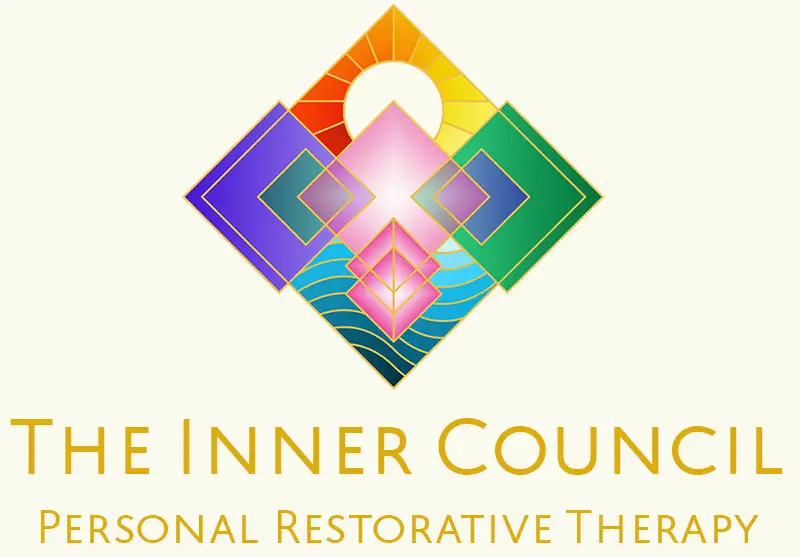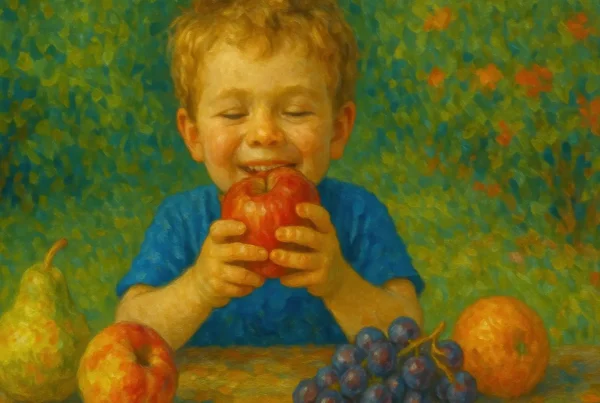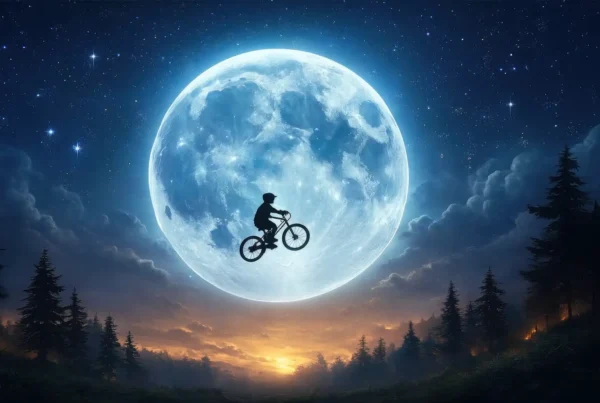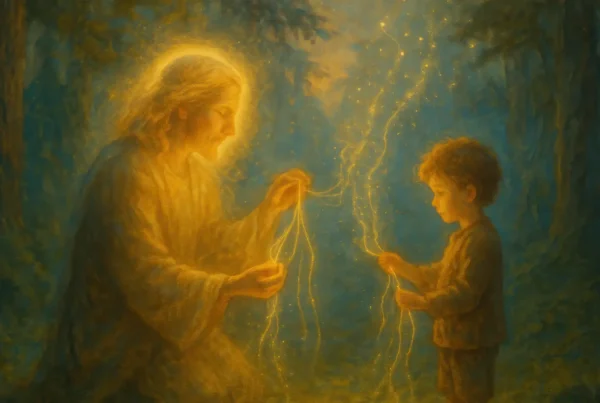BOOK YOUR WORKSHOP TODAY
All posts published here are presented as casual conversation pieces to provoke thought in some direction or another, they do not necessarily represent fixed opinions of the Inner Council, as our work exists beyond the spectrum of bound statement and singular clause.
Free Radicals of the Soul
How the heart remembers its rhythm through the chemistry of compassion
The Lost Course
The sea has moods that echo the soul. There are days when the water mirrors the sky, calm, open, infinite, and others when it shudders and tears at its own surface.
When trauma strikes, it is as though the vessel of self is caught in such a storm. The wind rises without warning. The compass spins. The body braces for impact. In that moment, there is no direction, only survival, movement for the sake of motion. The psyche learns that onwards is safer than still. And so we go on. Even when the map is gone, something ancient in us keeps rowing toward the horizon, toward any sign of shore. The human spirit, like the tide, cannot help but move. But forward motion alone cannot restore navigation. Without an inner star to steer by, we can cross whole lifetimes of ocean and never arrive. To heal is not to sail faster, but to remember where home is. Somewhere beneath the noise of the storm, the true coordinates remain, an inner light constant as the pole star, unchanged by weather or time. It is the essence of the child within us: pure awareness, radiant before the world began naming it.
The Essential Essence
The Inner Child is not a memory, nor merely a stage of development. It is the original element, the prima materia of the soul. Long before it learned fear or comparison, it knew itself as light. This essence does not fracture when the psyche oxidizes; it only becomes obscured, as gold hidden under rust. Trauma may scatter our attention, fragment our trust, and cloud our sense of belonging, yet somewhere underneath, there remains a purity untouched by corrosion. This is the “gold of the alchemists,” not a treasure to be found but a truth to be remembered. When we rediscover this light, it begins to act like an emotional antioxidant: suddenly, without effort, the missing parts of the psyche start to fill themselves in. Love, in this form, is not sentimental, it is alchemical. It restores order at the subatomic level of being. The charge dissipates, the reaction calms, and the elements of the self reassemble around the heart’s radiant gravity. In the ancient language of the forge, this is the crucible, the vessel that holds fire without breaking. Within it, pain is not destroyed but transmuted; the heat that once scattered us becomes the warmth that binds us again. To love the inner child is to remember the indestructible essence within the atom, the white light that contains every color, the divine gold that has never tarnished.
It is to look into the heart and realize that, despite everything, the sun is still burning there, quietly waiting for us to see it.
The Alchemy of Love
Every culture that has ever studied matter has eventually met mystery. Alchemists called it the opus, the Great Work, the long journey from lead to gold, from darkness to illumination. Modern chemistry inherited their symbols but lost their poetry. Yet, beneath the laboratory and beneath the psyche, the same law applies: transformation requires heat, containment, and love. Trauma generates heat, immense emotional energy that floods the inner world without a vessel to hold it. Without containment, that energy burns indiscriminately. It chars trust, distorts perception, and oxidizes hope. The raw forces of life turn against the self, not out of malice but out of misdirection. Love is the correcting agent, the catalyst that returns energy to harmony. Not romantic love, nor the fragile sympathy that depends on outcome, but the deeper current that underlies existence, the yes beneath everything. It is the natural coherence of creation, and when remembered, it begins to reorganize what chaos has scattered.
In the language of the soul, love is the antioxidant of being. It neutralizes reactive emotion, not by argument or restraint, but by saturation. It fills in the missing bonds, the lost electrons of the psyche, by offering the one thing all fragments crave: contact without condition. When love meets pain, oxidation reverses. The rust of shame dissolves. The charged parts of the self soften into their natural state. This is not a gradual repair but a reunion, a sudden coherence, like metal remembering its own shine when touched by the flame.
In this crucible, the Inner Child reappears not as victim, but as firekeeper. It was the child all along who held the ember of essence while the adult self fought the storm. Now, as the forge warms and the vessel holds, that ember flares into gold. The white light of total inclusion, every spectrum reconciled, begins to radiate outward, and the entire system stabilizes.
Love, in its purest form, is physics and prayer at once: a force that seeks symmetry, a devotion that brings all things back to center. It is what the alchemists meant when they wrote that the heart of the sun is the heart of man. So now let’s consider the journey with a more poetic tone.
The Contagion of Imbalance
When a molecule loses stability, it does not quietly retreat into itself. It reacts. It reaches. It collides. A free radical is not dangerous because it is broken, but because it is hungry, desperately seeking the electron that will complete it. In the psyche, this hunger shows itself as restlessness, defensiveness, drama, conflict, or collapse. In the world, it appears as a young person lashing out at a system that failed to love them, a community fragmenting under the weight of unmet need, a culture mistaking reactivity for identity. Free radicals behave predictably: they steal what they lack, destabilize what they touch, and multiply imbalance wherever the field is weak. Wounded youth do the same, not because they are malevolent, but because their essence has nowhere to land. They become the emotional equivalent of reactive molecules: unbonded, unwelcomed, unheld.
This is not pathology. It is physics.
A traumatized, unloved self will reverberate through relationships the way an unstable atom reverberates through tissue. Not because it wants destruction, but because it seeks equilibrium. Every act of harm, every flare of aggression, every transmutation of identity into armor carries the same hidden cry: “Someone must be responsible for the crime of not loving me.” In that logic, the world becomes both the culprit and the cure. Anything that promises direction, even destruction, feels preferable to drifting lost at sea.
This is why trauma spreads through communities like emotional oxidation. Instability, when uncontained, becomes contagious. A person who cannot find a safe landing in their own family or culture often becomes the storm for others. Their inner chaos seeks resonance, pulls energy into its orbit, disrupts any fragile harmony it encounters. But the fault is not in the youth, it is in the absence of the village. In a harmonized community, there are natural antioxidant forces: elders who regulate the field, traditions that embody coherence, relationships that absorb the excess charge of distress. The unloved do not become hazards; they are met by the warm gravity of belonging.
When the village disintegrates, through diaspora, colonization, modern fragmentation, the young return home with nowhere to land. Their re-entry burns through the system. Not because they are too much, but because the container is too thin. And yet, from the vantage of the true elder, none of this is surprising. Just as a free radical behaves according to nature, so does a wounded soul. When love is withheld, the psyche becomes reactive. When belonging is disrupted, identity mutates. When the field weakens, instability spreads.
None of this is moral failure. It is cosmic choreography. A predictable dance of imbalance seeking restoration, of chaos seeking coherence, of pain seeking the love it never received. And until that love is found, in a person, a practice, a community, or the radiant essence within, the reaction continues, echoing across generations.
The Village as Antioxidant Field
Human beings were never meant to heal alone. We are organisms of pattern and pulse, shaped by relational resonance. In a balanced traditional village, the emotional field is coherent, held by shared values, daily rhythms, and the unbroken presence of elders. Nothing is redundant. Nothing is “just for fun.” Even leisure, song, dance, ritual, is structurally part of the communal nervous system. Every gesture, every practice, every point on the pentagram of cultural expression contributes to balance. It is the deep architecture of belonging: a living antioxidant system surrounding the developing child. In such a village, the child’s nervous system grows inside a coherent field. They do not need to invent safety; they inherit it. They do not wander unrooted; the territory itself mirrors their worth. They learn rhythm by being held in rhythm, the cadence of work, rest, prayer, and celebration.
But when the village fractures, through colonization, forced migration, industrialization, economic violence, something more than structure is lost. The container is lost. The field that once held the child’s essence with tenderness becomes thin, inconsistent, and often unsafe. Diaspora trauma is not only displacement from land; it is displacement from rhythm, from role, from resonance. And when those who left try to return, culturally, emotionally, spiritually, there is often no place set for them at the table. No elder waiting at the gate. No harmony in which their restless energy can dissolve. Their arrival feels like disruption because the original architecture is no longer present to receive them. It is no accident that traumatized youth seem “reactive” or “oppositional.” Like free radicals, they destabilize the fields they enter, not because they are destructive, but because the field lacks the strength to absorb and integrate their charge. A stable system would not see them as threats; it would see them as returning children, carrying the storm inside them because no one met them at the shore. And so healing requires revillaging, not merely socially, but internally. Within the psyche there must be a place where every part belongs:
- a wise Inner Elder whose presence regulates the field
- a compassionate Inner Mother/Father who can receive intense emotion
- a grounded Protector who prevents further fragmentation
- a Teacher who gives meaning to experience
- and at the center, the Inner Child, the radiant sun around which all others orbit.
You don’t need every helper fully formed to restore coherence. Just the memory of harmony begins the work. It is written deep in our ancestral code, the shape of community, the weave of protection, the rhythm of belonging. Even imagining the village is a return to balance. Even invoking it restores the first sense of home.
Because this is the truth at the heart of all diaspora trauma: you were never meant to survive without a village. Your distress is not a flaw. It is evidence of what your nervous system remembers. Your pain is a longing for the ecosystem that shaped your ancestors, an ecosystem of love, purpose, and rhythm. And as you rebuild this village within yourself, something remarkable happens: the free radicals quiet, the reactive energies find their bonds, the unloved parts of you finally touch ground.
- The charge dissipates.
- The field stabilizes.
- The child returns home.
Predictable Chaos – The Cosmic Dance
To the untrained eye, chaos looks personal. It looks like failure, betrayal, collapse. But to the village elder, and to anyone who has learned to read the deeper currents of life, chaos is not personal at all. It is rhythmic, almost mathematical. A predictable spiral of imbalance seeking restoration.
In chemistry, a free radical does not act out of spite. Its reactivity is simply the nature of its incompleteness. It steals electrons because it must; it destabilizes its environment because it is destabilized within.
Humans behave the same way. When love is denied, when belonging is interrupted, when the field that should stabilize the child has collapsed, the psyche enters a reactive state. Aggression, withdrawal, identity mutation, defiance, these are not signs of moral decay. They are signs that the system is trying to restore symmetry with too little resource. This is why the problems of modern society are entirely predictable from the elder’s perspective. Wherever the village has dissolved, free radicals multiply. Wherever rhythm is lost, reactivity becomes culture. Wherever love is withheld, the unloved band together in their hunger and create storms that no single person intended, storms of loneliness, rage, confusion, and fear.
This is not random.
It is the cosmic dance of imbalance.
A dance as old as elements, as old as atoms.
A community without elders will produce youth who act like fragmented energy. A society without ritual will produce souls who cannot metabolize emotion. A culture without village will produce individuals who cannot feel safe enough to be kind. Elders once knew this. They were not shocked by human behavior because they could read the pattern beneath it. They watched the way hurt ripples outward, how one child’s despair becomes a family’s agitation, then a village’s discord. And they watched how one act of coherence, one song, one ritual, one gathering, one expression of unconditional love, could neutralize that ripple and restore the whole.
In this sense, imbalance is not the enemy.
Imbalance is the messenger.
It shows where the field has thinned.
It reveals which parts of the village, inner or outer, need attention, warmth, containment, or truth.
Even the most reactive youth, even the most chaotic part of your own psyche, follows this same cosmic choreography. The opposition, the mutation, the resistance to solutions, these are defensive attempts to maintain identity in a field that feels unsafe. A free radical opposes stabilizing forces because it fears dissolution. And so do we.
But when the heart opens, when the inner child’s light is felt again, the fear reverses, the dance changes, and the storm begins to quiet. What once looked like opposition reveals itself as longing. What once looked like destruction reveals itself as a plea: “Hold me. Receive me. Don’t let me disappear.”
At the cosmic level, there is no such thing as chaos without purpose. There is only energy looking for home.
The Return of the Light
There comes a moment in every healing journey when the storm begins to quiet, not because the waves have finally gone still, but because we have remembered where the light is.
The essence of the child, that small sun within the heart, never burned out. It only waited behind the weather, steady as a star waiting for clouds to tire. When the village is rebuilt around it, even in imagination, even in intention, the child steps forward again. And something extraordinary happens. The same energy that once scattered us begins to gather. The same fire that once burned becomes warmth. The same parts that spiraled outward in fear begin to orbit again in harmony, each finding its natural distance, its natural place. The psyche, like a solar system, reorganizes around the returning star.
This is the moment the alchemists tried to describe when they spoke of the gold within the ore. Not a metaphorical gold, but a real inner substance, a radiance that emerges when fragmentation gives way to essence.
Trauma oxidizes the surface of being, but it cannot touch the heart of the metal. When love returns, even faintly, the rust falls away and the original shine reveals itself.
This shine is not innocence regained, but innocence remembered. It is the first truth, the one before fear, before exile, before the long wandering at sea. It is the recognition that you were never lost; only the path toward yourself had become obscured. In this moment, the Inner Child is no longer a wounded figure needing rescue. The child becomes the navigator, the one who knows the true north of the soul, who points not outward but inward, toward the hearth where you belong.
This return is not dramatic. It is quiet, like dawn. But once it begins, the whole inner landscape changes. Charged parts find their electrons. Reactive parts find rest. The survival strategies that once defined identity soften, releasing the tight grip of diaspora trauma. You are no longer wandering; you are arriving.
The field around you shifts as well. Others feel it. Broken systems feel it. Your coherence becomes an antidote in the wider world, a stabilizing presence, a living antioxidant. You become, in your way, an elder for others: a harbor, a rhythm, a returning point. This is the final alchemy. Not the transformation of pain into something else, but the transformation of pain back into what it always wanted to be, connection.
And at the center of it all sits the child, glowing with the unmistakable light of homecoming.
The storm never had the power to extinguish this flame.
It only taught you how precious the flame is,
and how to build a village inside yourself
where it will never be lost again.
Epilogue, The Child at the Center of the Sun
In the end, all healing is a homecoming.
Not a return to who we were before the storm, but to who we were beneath it, the one who watched the waves with unbroken trust, the one who knew the direction home without needing a map.
The free radicals quiet.
The inner sea settles.
The village reforms around the hearth of the heart.
The child who once wandered through the corridors of exile now stands radiant in the center of the chest, not waiting for rescue, but offering guidance.
What was scattered becomes constellation.
What was oxidized becomes gold.
What was chaotic becomes the choreography of belonging.
We discover, perhaps for the first time, that the light we sought outside was burning inside all along, shielded, yes, but never extinguished.
And the power that restores us is not discipline, not understanding, not even time, but the one thing the psyche has always obeyed:
Love, fierce, unconditional, radiant as the white light that holds every color.
This is the alchemist’s secret.
This is the heart’s return.
This is the end of wandering and the beginning of living from the center.
The child is home.
The field is whole.
And the soul, having remembered its gold, shines again with the quiet authority of the sun.
Visit our Inner Child Workshop page to find out more.
Further Reading to Restore Rhythm
- Michael Meade – The Presence of the Soul
Mythic insight into the gold hidden inside suffering; the alchemy of returning to one’s essence. - James Hillman – The Soul’s Code
A brilliant exploration of the “acorn theory”: the innate spark, the essential blueprint. - Tosha Silver – Outrageous Openness
Playful, sacred surrender; remembering the radiant innocence within. - Mark Wolynn – It Didn’t Start With You
How generational imbalance spreads like emotional oxidation, and how belonging restores the field.





